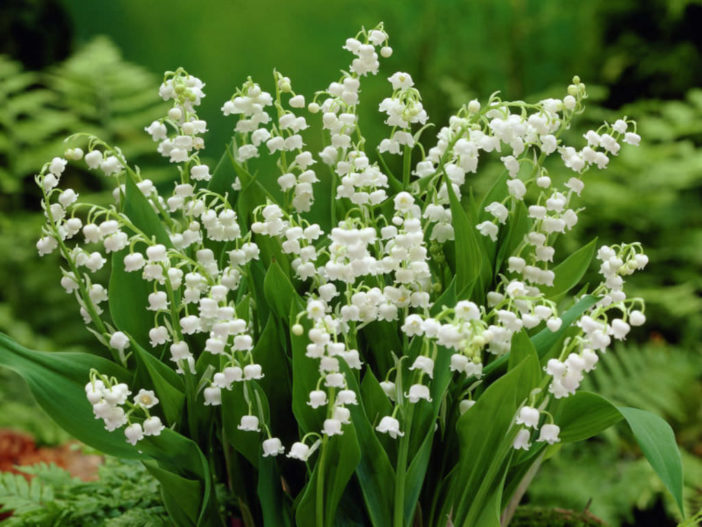What comes to mind when one first thinks about “the Lily of the Valley” is a delicate flower that is symbolic of Easter and Weddings. It grows 15 to 30 cm tall, with only one or two leafs, and flowering stems, which have two leaves and 5 to 15 bell-shaped white flowers. The Lily of the Valley grows in the spring of the year and comes in three varieties from China and Japan, Eurasia, and the USA. Sadly, it is a poisonous woodland flowering plant that grows predominately in cooler temperatures in the Northern Hemisphere of Asia and Europe.
The Lily of the Valley is also known as Our Lady’s Tears or Mary’s Tears from Christian legends, which came about from Mary’s weeping when Jesus was being crucified. Another legend of the flower comes from the tears that Eve shed when she was expelled from the Garden of Eden with Adam. Lastly, the last legend was that of Saint Leonard of Noblac during his battles with a dragon.
It should be of no surprise that “the Lily of the Valley” is referred to in the Bible because it is very much a part of Christ and is reflected upon as a rose. As a symbol of humility “the Lily of the Valley” is a sign of Christ’s second coming, along with being a power for men to envision a better world. Although, “the Lily of the Valley” and “the Easter Lily” are often confused, they are both white and stand for humility and purity within the Christian religion. The Lily of the Valley is mentioned in the Bible 15 times and 8 of those times are in the book of the Song of Solomon in the Old Testament.
According to the Bible, the Lily grows in valleys, fields, gardens, and even among thorns. It is a sweet, fragrant flower that relates to the sweetness of Jesus’ ministry especially when He gave Himself for our transgressions. The Lily is also connected to motherhood, poetry, historical traditions and mythology. Then when one thinks about the white petals of the flower, they are reminded of Mary’s virgin body and her glowing soul.
In German mythology the flower is linked to the virgin goddess of spring Ostara and symbolizes life to Pagans. Additionally, the blooming of the lily refers to the feast of Ostara. Once again, the sweet smell and whiteness of the flower remind one of humility and purity of its patron goddess.
The Lily of the Valley is also known as May Lily, May Bells, Lily Constancy, Ladder-to-Heaven, Male Lily, and Muguet. Its scientific name Majalis or Maialis means “belonging to May” and is under the dominion of Mercury astrologically. Lastly, the Lily of the Valley signifies the return of happiness and perhaps this is something that should be considered a lot more in today’s society as it is more and more difficult to find peace.
Source: sciences360.com


























